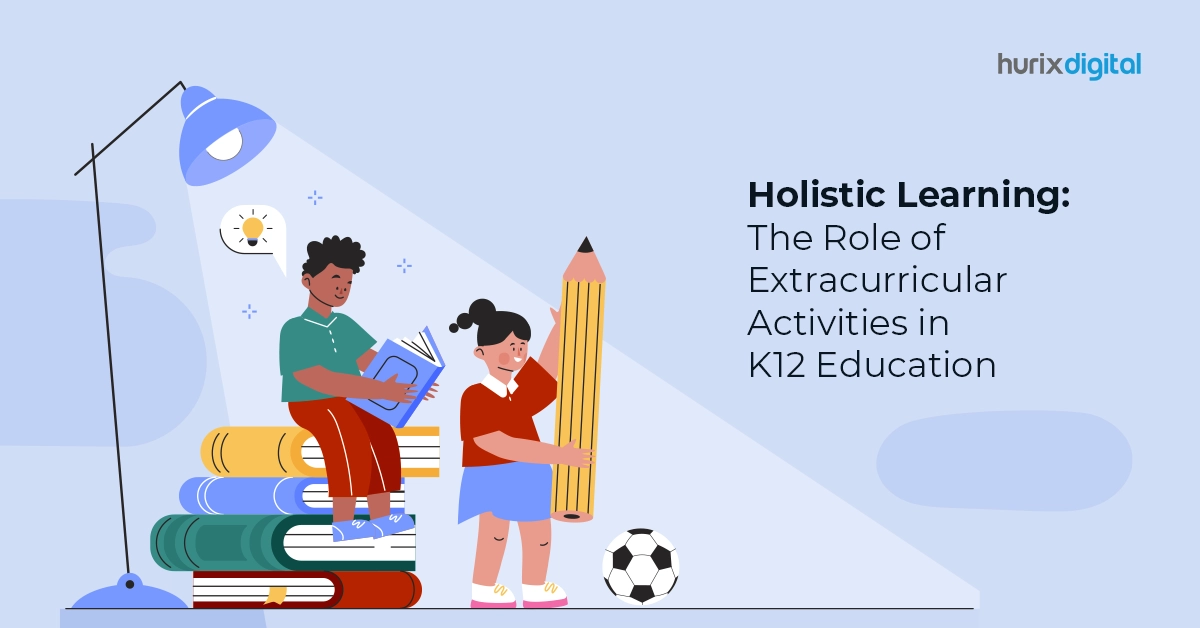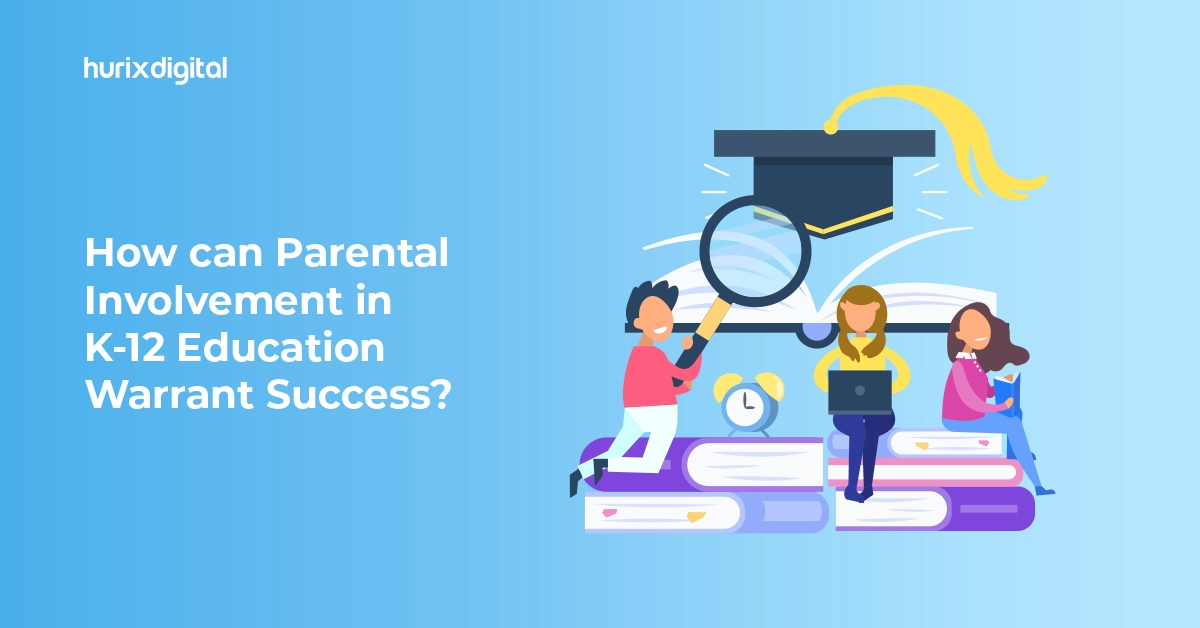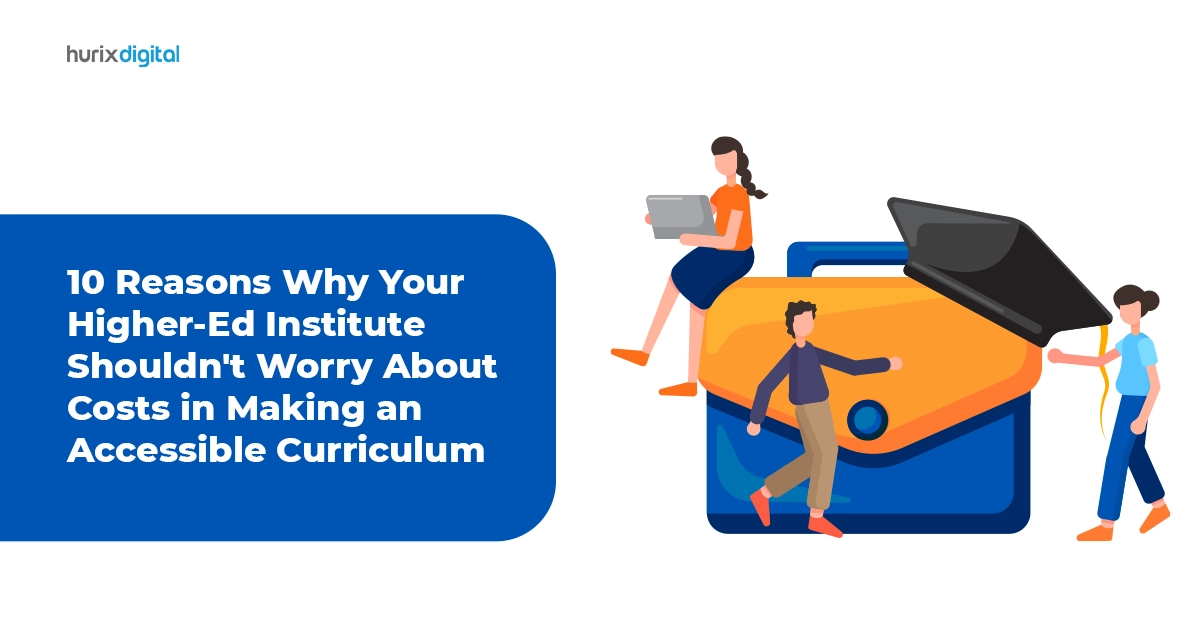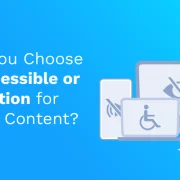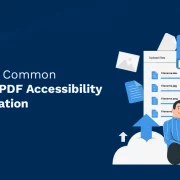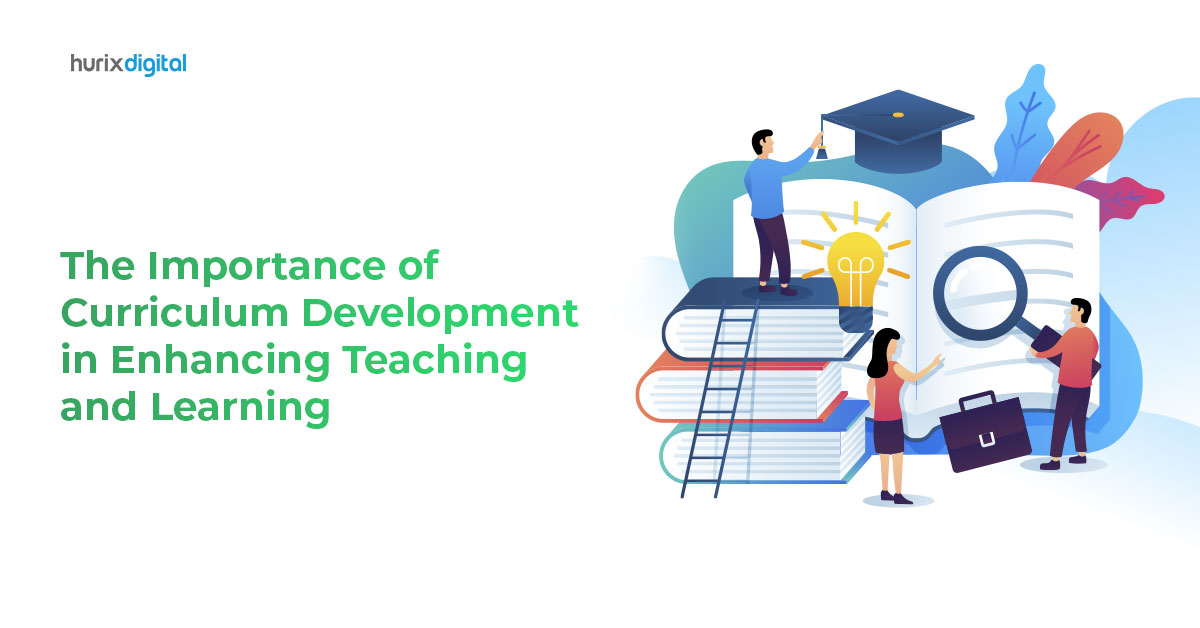
The Importance of Curriculum Development in Enhancing Teaching and Learning
The way we impart and gain education today has evolved significantly and for a good reason. Technology and audiovisual aids have made it easy for students to grasp complex concepts. However, with the rise in online education, the K12 curriculum has also undergone a radical shift.
Although most institutions have returned to traditional classrooms, eLearning in education is not going away anytime soon. Be it brushing up on lessons, self-paced learning, interactive experiences, or even helping with homework or extracurricular activities, online learning is helping us make education more fun and interactive.
As of April 2024, the global internet user population has increased to 5.44 billion, or 67.1% of the world’s population. This increase enables online education to become accessible to a larger population.
The curriculum development process can help educators update learning relevant to today’s students. For instance, factoring in personalization, gamification, live simulations, and enhanced web accessibility can help take learning experiences to the next level.
Today, we will explore the importance of curriculum development in today’s context and examine its role in online program development.
Table of Contents:
What is Curriculum Development?
Before we understand how curriculum development plays a key role in our learning experiences, let us first understand what it is all about.
To put it simply, curriculum development refers to the process of creating educational programs and materials that align with today’s updated educational standards and incorporate subjects or skills that are relevant today and in the future.
It involves researching and selecting appropriate content, designing courses and instruction manuals, evaluating the information already part of the curriculum, and making updates or changes wherever necessary. The goal is to ensure that students get a comprehensive learning experience that meets their needs and prepares them for the future.
A well-planned curriculum ensures appropriate attention to each subject or level, which helps to enhance a student’s ability to keep pace and grasp complex subjects.
Also Read: The Importance of Curriculum Planning for Effective Learning.
Who is Responsible For Curriculum Development?
A look at the traditional educational pattern will tell you that the responsibility of developing curriculum for K12 schools and other institutions is always with the state and central government. Mostly, the government will appoint educational bodies tasked with ensuring that academic standards are set and maintained.
However, since the world around us is changing rapidly, so should our educational requirements. Thus, educators should work with subject-matter experts when designing the curriculum, ensuring they bring a real-world perspective to their educational content. This will enable curriculum development to be more thorough and ensure that it:
- Meets the learning requirements from a current and future perspective.
- It helps students develop skills and knowledge about the chosen domain in a way that can add value in the real-world environment and help them become successful in it.
- This includes not just educational or theoretical content but also interactive elements like video, audio, and images and ways to ingrain knowledge through lectures, discussions, group projects, simulations, or other methods.
- Programs are designed to be accessible to learners with diverse challenges, needs, and preferences by following Web Content Accessibility Guidelines (WCAG).
- The smartphone user base is expected to grow to 6.4 billion by 2029. Hence, programs must be designed with a mobile-first approach to make learning accessible to a wider group of learners.
As outlined in the “Education 2030” paper by the Organization for Economic Co-operation and Development (OECD), “The concept of ‘curriculum’ should be developed from ‘predetermined and static’ to ‘adaptable and dynamic.’ Schools and teachers should be able to update and align the curriculum to reflect evolving societal requirements and individual learning needs. Teachers, students, and other relevant stakeholders should be involved early in curriculum development to ensure their ownership for implementation.
The shift in how knowledge is shared and taught makes it important for all stakeholders to come together and provide feedback to make setting a curriculum more interactive. As per estimates, the market size of online K12 education will reach $716.6 billion by 2029.
Thus, with the growing popularity of online education, online program development cannot follow the preset rules and needs a solid partnership of teachers, students, and digital education content providers.
Also Read: The Importance of Curriculum Planning for Effective Learning
Key Considerations for Online Curriculum Development
While online curriculum development offers exciting possibilities, it has several challenges, especially when multiple stakeholders are involved.
Some of the key considerations that educators must keep in mind during the online curriculum development process include:
1. Inclusivity and Accessibility
When educators include new information or concepts in the curriculum, they often overlook how easy it will be for distinct learners to grasp them.
While some students can grasp concepts faster and even go beyond using reference materials for additional learning, several students, especially those with some form of disability, can feel left out.
To prevent these challenges from occurring, educators can create inclusive online learning experiences using the Universal Design for Learning (UDL) framework. UDL advocates for flexible learning materials catering to diverse learning styles and abilities.
Web accessibility pillars include offering text transcripts for audio or video lectures, ALT-text for images, incorporating closed captions for multimedia content, offering the Read Aloud option, and providing alternative downloadable formats like PDFs or ebooks for text-heavy materials.
By following these principles, educators can create new materials that are accessible to all and ensure that even students with disabilities can actively participate in the online learning environment.
2. Digital Divide
Technology is now making it easy for a diverse range of students from all backgrounds to get access to education.
However, the digital divide still exists, where not everyone has access to the technology or a stable internet connection required for online learning. This divide can significantly hinder online learning opportunities and create barriers to learning for students who may not have access to these resources.
Educators play a crucial role in addressing the digital divide. By providing downloadable course materials, they can enable students to access and study them even without an internet connection.
Additionally, offering offline options like printable worksheets or activities can enhance learning outside of online sessions. This proactive approach can help bridge the gap and ensure that all students, regardless of their access to technology, have equal opportunities to learn. Digital learning platforms must also be optimized for engagement in areas with low, slow, or no connectivity.
Collaboration is also a key element for overcoming the digital divide. By partnering with institutions or non-profit organizations, educators can tap into a wealth of resources and solutions for students lacking technology at home.
Libraries and community centers often offer free computer access and internet connectivity, and educators can leverage these resources to ensure all students have an opportunity to participate in online learning. This collaborative effort can create a more inclusive and accessible online learning environment.
3. Boosting Engagement in an Online Environment
Keeping students engaged and interested is often challenging, especially regarding educational content. However, this is hard to monitor in the online learning environment, and giving dedicated time and attention to each student becomes a challenge.
To help students stay engaged even in the online learning environment, educators can use interactive learning elements to turn online learning into an active engagement experience.
One approach is to give interactive assessments after every lesson, including quizzes, polls, or breakout rooms for discussions. This turns passive learning into active participation and engages the students to discuss ideas, share knowledge, and foster community within the online classroom. Educators must also consider introducing interactive eBooks, which are engaging, cost-effective, and convenient for learners today. The use of superior digital publishing technology makes it seamless and secure to convert textbooks into eBooks.
Additionally, academic program directors can have interactive discussions or collaborative team projects. This approach encourages students to share ideas, clarify concepts, and learn from each other. By collaborating and discussing with other peers, students can develop essential skills like teamwork and problem-solving skills in a virtual setting.
How Can Curriculum Development Help Students?
A well-set-out curriculum is essential for educators and helps students in more ways than one. For example, since most modern curricula use interactive learning features, students can access an engaging educational experience.
They can go beyond the traditional textbook and grasp complex concepts using interactive videos or audiobooks. Plus, this also allows education to be more accessible for all, especially for differently abled students.
Having a set curriculum helps students in several areas, such as:
- Providing students with a clear understanding of their course and schedule
- Aligning their educational goals with industry standards
- Fostering student engagement
- Enhancing teaching effectiveness
- Helping students plan their schedule
- Sets the pace for their learning to ensure proper progress
- Factors in relevant support for at-risk learners, as well as learners with limitations
- Nudges students towards self-learning via more interactive, challenging, gamified learning modules
How Does Curriculum Development Aid in Teaching?
When it comes to the benefits of curriculum for teachers, there are several areas that we can explore.
First, the curriculum helps teachers organize and present the learning structurally, enabling learners to grasp it effectively. Thanks to a proper curriculum, lessons aren’t taught haphazardly, allowing teachers to set the pace for students’ learning properly and efficiently.
Teachers can also introduce new-age learning methodologies like quizzes, assignments, objective tests, group discussions, and more to add value to the defined curriculum.
Overall, this helps educators, instructors, and teachers to:
- Get a clear roadmap of instructions
- It helps teachers understand what students should know
- It enables teachers to plan their lessons effectively
- Supports teachers in developing effective teaching methods and practices
- Encourages teachers to go beyond the normal and use interactive teaching strategies
- Enhances teacher effectiveness and student engagement
- It helps teachers stay updated with the latest information and trends in the educational system
Thus, it provides a roadmap for learners and teachers and helps align educational goals to the latest standards. In addition, an effective curriculum can help foster student engagement, help them understand expectations, and prepare them for future success – whether in further education, career, or life.
Also Read: The Importance of Curriculum Planning for Effective Learning
Conclusion
In conclusion, curriculum development is crucial for education and improving learning outcomes. However, this is not a one-time process. Today’s curriculum must incorporate interactive technology to help students understand concepts, learn new skills, and get the power of self-paced education.
Institutions and online education providers can always work with industry experts and teachers and even seek feedback from parents or students to incorporate the best practices in online curriculum development for higher education or K12 students.
Professional K12 curriculum development companies, for instance, help simplify this process and offer a solid foundation to build. Digital education content providers and K12 online curriculum service providers have a rich repository of interactive content for students and teachers.
Hurix Digital is one such provider, with access to over 6,000 interactive and high-quality pieces of content to help you craft the right curriculum for your students.
Get in touch today to learn how to leverage modern technology to design a futuristic learning experience ideal for students and teachers.
Frequently Asked Questions (FAQs)
Q1. How does curriculum development benefit students?
Curriculum development benefits students by providing a clear course structure, aligning educational goals with industry standards, fostering engagement, enhancing teaching effectiveness, helping with schedule planning, and setting the pace for learning progress.
Q2. How does curriculum development aid teachers?
Curriculum development helps teachers organize and present learning effectively, enables structured teaching, introduces modern learning methodologies, and keeps educators updated with educational trends.
Q3. Why is curriculum development important in online education?
Curriculum development is essential in online education as it allows for interactive learning experiences, enables self-paced education, and helps students understand complex concepts through technology.
Q4. How can stakeholders like teachers and students contribute to curriculum development?
Stakeholders, including teachers and students, can contribute to curriculum development by providing feedback, insights, and ideas to create a more interactive and adaptable curriculum that meets evolving societal requirements and individual learning needs.
Q5.Can curriculum development adapt to changes in the educational system?
Yes, curriculum development can and should adapt to changes in the educational system to stay relevant. It should incorporate new teaching methods, technologies, and stakeholder feedback to meet current and future educational needs.

Senior Vice President
A Business Development professional with >20 years of experience with strong capability to sell new solutions and develop new markets from scratch. New Market Entry Specialist with experience of working in two of the largest emerging markets – China & India. Also covered other key markets in APAC, US, EU & ME. Exceptional experience of conceptualizing, ideating and selling new learning technologies like VR AR, etc. across multiple industry verticals.
